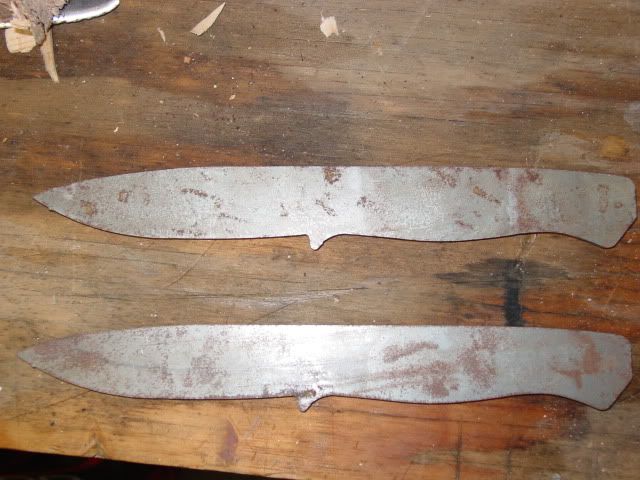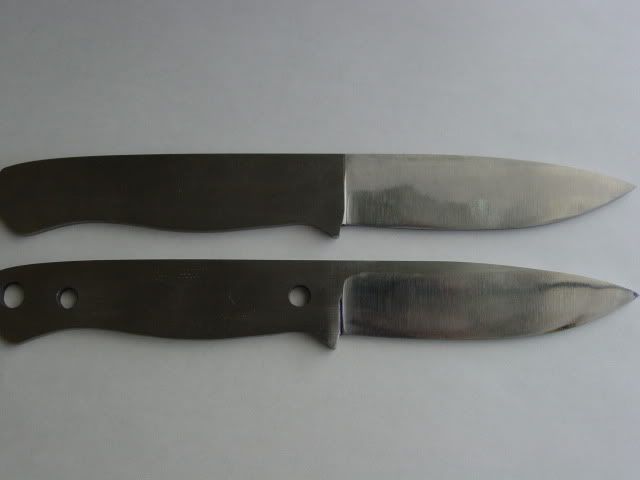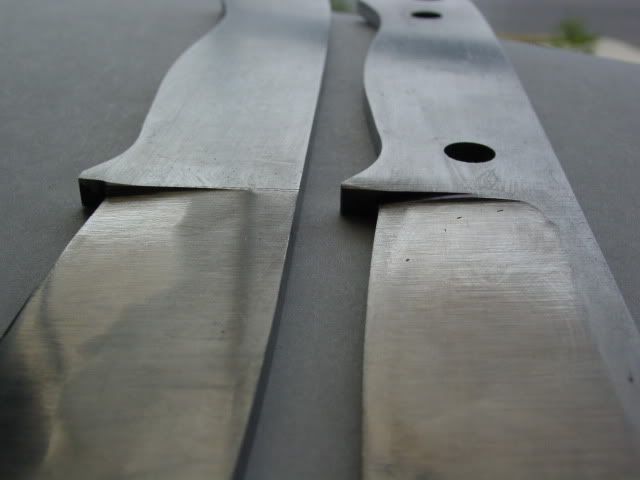V
valcas1
Guest
I am in the process of creating my first knife thanks to David at Great Lakes. It is part of a friendly competition on another knife forum. The reason I am posting here Is I hope to gain as much knowledge from the makers that appear to be very active on this new forum.
I guess this is going to be a WIP thread of sorts. My intention is to show all of you my process and have you tell me what I am doing wrong, right, or how I can improve the end result. Well here we go!
Knife blanks as supplied from David

To the drill press for some holes.

After some time on the grinder

One side...

Other side...

That's where I am so far. What do you think?
Now the questions.
1. What grit should I take these to pre heat treat?
2. What is the best way to clean up the plunge line. Man it is so scary to use my grinder because I don't have variable speed yet and don't want to screw these up. Any Suggestions?
3. What is everybody using for hand sanding? Do you use a bar with sand paper wrapped around it, or do you use a plate with sandpaper glued to it?
Please let me know what you think.
Paul
I guess this is going to be a WIP thread of sorts. My intention is to show all of you my process and have you tell me what I am doing wrong, right, or how I can improve the end result. Well here we go!
Knife blanks as supplied from David

To the drill press for some holes.

After some time on the grinder

One side...

Other side...

That's where I am so far. What do you think?
Now the questions.
1. What grit should I take these to pre heat treat?
2. What is the best way to clean up the plunge line. Man it is so scary to use my grinder because I don't have variable speed yet and don't want to screw these up. Any Suggestions?
3. What is everybody using for hand sanding? Do you use a bar with sand paper wrapped around it, or do you use a plate with sandpaper glued to it?
Please let me know what you think.
Paul




